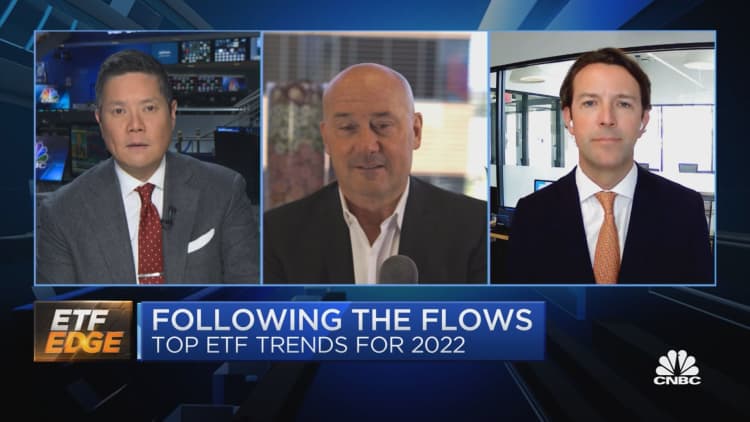
Despite lighter trading volumes in the latter part of the year, certain segments of the ETF market are bypassing the trading slowdown and managing continued and steady inflows.
Funds tied to China, like the KraneShares CSI China Internet ETF (KWEB), have made significant rebounds on the China reopening. The tech-centric ETF has rallied more than 55% since the start of November, although it remains down 15% for the year.
"All eyes are on China," Tom Lydon, vice chairman of VettaFi, told Dominic Chu on CNBC's "ETF Edge" on Monday. "They're looking for a rebound, so they're supporting real estate in a big way."
Lydon explained that as China begins to relax its strict zero-Covid policy, stores and casinos are welcoming back clientele while the government encourages growth in the real estate space.
"China does not want to disconnect from the global capital markets," he said. "All the saber-rattling that we've seen back and forth with the SEC looking to maybe delist Chinese stocks in the next couple of years, probably not going to happen."
News of a China reopening is also positive for commodities funds, according to Will Rhind, founder and CEO of GraniteShares. As domestic travel restrictions are lifted, it could spark increased demand for jet fuel.
"Commodities were one of the few places where people made money [this year]," Rhind said in the same segment. "And that will continue, in my mind, next year."
China aside, fixed income funds are also seeing an end-of-year pop as more investors seek out opportunities for tax-loss harvesting plays.
"People are looking to prioritize cash flow and prioritize income, and really adopt much more of a defensive posture," Rhind said. "That's where income products come in."
Despite rising interest rates, Rhind said he sees income funds continuing to do well in the new year, as investors shift away from growth products in favor of value-orientated plays.
"We'll continue to see interest in high-quality companies that have a demonstrated track record of increasing their dividend over time," Rhind said. "That becomes more attractive."
Dividend ETFs have seen more than $50 billion in inflows this year, according to GraniteShares, making it one of the most consistent and best-performing fund categories in 2022.
Rhind added that GraniteShares has seen more interest in pass-through securities, which are alternative income funds backed by hard or real assets with an inflation-related spin on the income.
Its income-focused product, GraniteShares HIPS US High Income ETF (HIPS) provides exposure to four of the highest-yielding securities across alternative income: MLPs, REITs, BDCs and closed-end funds. The fund is up more than 10% since hitting its 2022 low in October but remains down 18% for the year.
"This is an interesting area of the market where we're going to see more interest next year," he said.
The ETF space is on track for its second-best year of flows in 2022, with more than $600 billion in inflows this year.
"It's all about a choice, it's all about a wrapper," Lydon said. "But when you look at the vehicle of choice, it really has been ETFs for a variety of reasons."
Lydon explained that some of the largest asset managers, like Bernstein, Morgan Stanley and Capital Group, that traditionally focus on separately managed accounts or mutual funds, are now entering the ETF space. And investment firms like Dimensional Fund Advisors are converting their mutual funds into ETFs, he said.
Options overlay strategies among equity-based ETFs are another trend Lydon sees growth potential for in 2022. The JPMorgan Equity Premium Income ETF (JEPI) seeks to provide a majority of the returns tied to the S&P 500 Index, while the Nationwide Risk-Managed Income ETF (NUSI) replicates the Nasdaq-100.
"If you can replicate an index while at the same time getting a 7%, 8%, 9% yield, that's pretty attractive," Lydon said.





